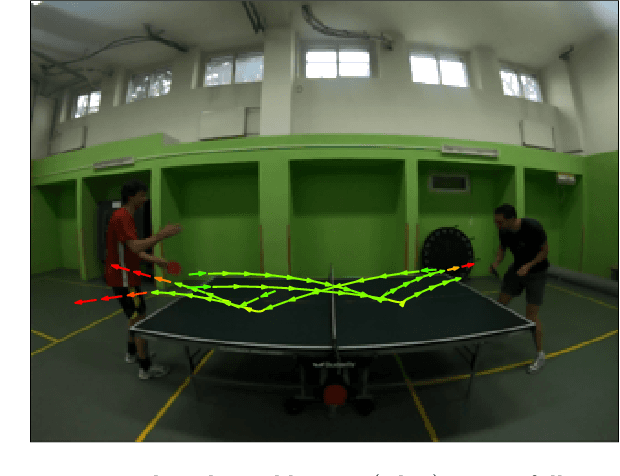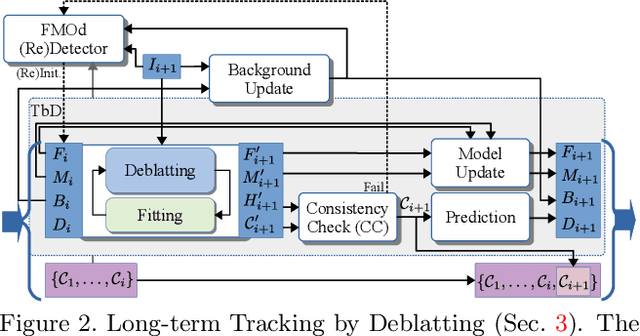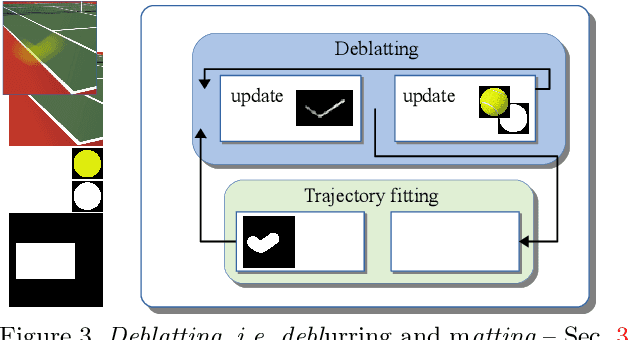Intra-frame Object Tracking by Deblatting
Paper and Code
May 09, 2019


Objects moving at high speed along complex trajectories often appear in videos, especially videos of sports. Such objects elapse non-negligible distance during exposure time of a single frame and therefore their position in the frame is not well defined. They appear as semi-transparent streaks due to the motion blur and cannot be reliably tracked by standard trackers. We propose a novel approach called Tracking by Deblatting based on the observation that motion blur is directly related to the intra-frame trajectory of an object. Blur is estimated by solving two intertwined inverse problems, blind deblurring and image matting, which we call deblatting. The trajectory is then estimated by fitting a piecewise quadratic curve, which models physically justifiable trajectories. As a result, tracked objects are precisely localized with higher temporal resolution than by conventional trackers. The proposed TbD tracker was evaluated on a newly created dataset of videos with ground truth obtained by a high-speed camera using a novel Trajectory-IoU metric that generalizes the traditional Intersection over Union and measures the accuracy of the intra-frame trajectory. The proposed method outperforms baseline both in recall and trajectory accuracy.
 Add to Chrome
Add to Chrome Add to Firefox
Add to Firefox Add to Edge
Add to Edge